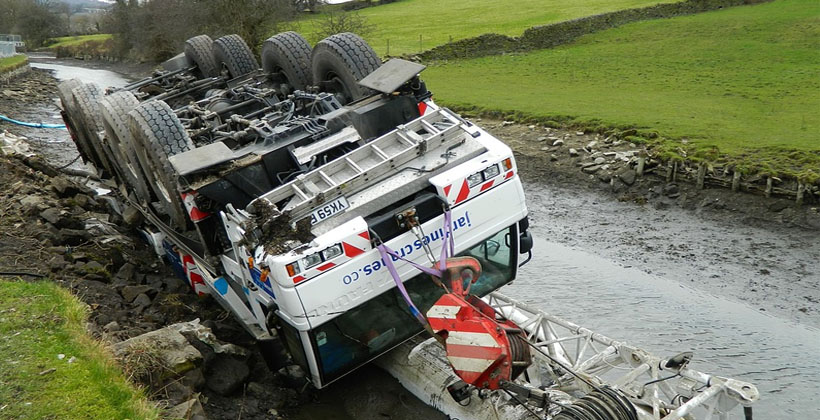LIFESAVING TIPS FOR DRIVERS
STAY ALERT - Commercial driving is demanding job! A commercial driver must not be tired or drowsy while operating a motor vehicle. Unfortunately, many accidents occur because drivers are not alert or fall asleep at the wheel. It is absolutely vital that drivers remain awake and alert when behind the wheel in order to drive safely and avoid accidents.
The warning signs of drowsy driving are:
- frequent yawning or blinking
- difficulty remembering the past few miles driven
- missing your exit
- drifting from your lane
- hitting a rumble strip on the side of the road
Sleep is the only true preventative measure against the risks of drowsy driving. Make it a priority to get 7-8 hours of sleep per night.
MAINTAIN A SAFE FOLLOWING DISTANCE - Always maintain a safe following distance behind a vehicle traveling in front of you. That means, if you're driving a heavy vehicle, you should try to maintain six seconds following distance rule during during ideal conditions (daylight, when weather is good, roads are dry and with low volume traffic). Double your following distance rule in poor weather, bad road conditions, heavy traffic and during night-time driving. If the weather conditions are very poor (heavy snow, heavy rain, heavy fog, ice), the level of visibility is drastically lower. Adjust your driving speed to the conditions and start tripling the basic safe following distance rule. The greater the following distance you have from the vehicle in front the more time and space you will have to react to unexpected and to manoeuvre and avoid dangerous situation.
Remember: Following another vehicle too closely is known as tailgating. If you tailgate you may not be able to safely stop in time to avoid a collision.
Safe following distances vary depending on: your speed, the driving conditions, and the type of vehicle you’re driving.
PLAN YOUR ROUTE - All commercial drivers in the industry know the importance of good route planning. Not only is it essential to plan where to refuel, eat and rest; but as some North American roads become increasingly busy during summer time, heavy transport truck drivers must also take into account congestion, accidents and planned road maintenance. Good road trip planing and other important logistic considerations (information about the area you will be traveling, weather conditions, road maintenance etc.) is essential for successful trips and safe travel. Always familiarize yourself with your route to avoid dangerous situations and manage your time wisely.
It is also good idea to use the time while loading or on break to pre-plan your route so you're not rushing last minute. Perform a risk assessment on the route you plan on taking so you know what to expect. Use the method you like the most, but educate yourself and do not head blind onto the big road.
PROPER USE OF GPS INFORMATION - Purchase a good professional GPS device, preferably the one meant for your type of vehicle. When you're issued your route/address to where you're headed, by all means, reach for your GPS Device and enter it. Make sure you also enter your vehicle's dimension and weight, so the device may help you. Once entered, ensure the route it is taking you on is what your carrier prefers, and also the route you agree with by hitting the "Review Route" button on your GPS Device (name of button may vary).
Learn how to use the map vs. GPS Device. It will save you a lot of frustration, and a lot of your carriers’ frustration in the process. Compare the route GPS is taking you on against your road atlas and memorize the route you need to take, or write it down somewhere where you can glance at it.
Keep in mind that the route recommended by your GPS is not always suitable for heavy vehicle transport (in terms of weights and dimensions). Always check your route on the map. It is good idea to test your GPS device for places you know well! This will give you an idea of how wrong the instrument can be. That way you will become aware of this before it is too late in an unfamiliar place.
EXPECT THE UNEXPECTED - Things don’t always go as planned in commercial trucking job. It’s just how it is. You’re going to have brakedowns, blowouts, loads will be delayed, the weather can get in the way, you get the idea. The trick is to stay calm, roll with it but keep your traffic management informed constantly. They all know and understand that things go wrong and they’ll really appreciate calm, solution-focused, professional, communication from you.

